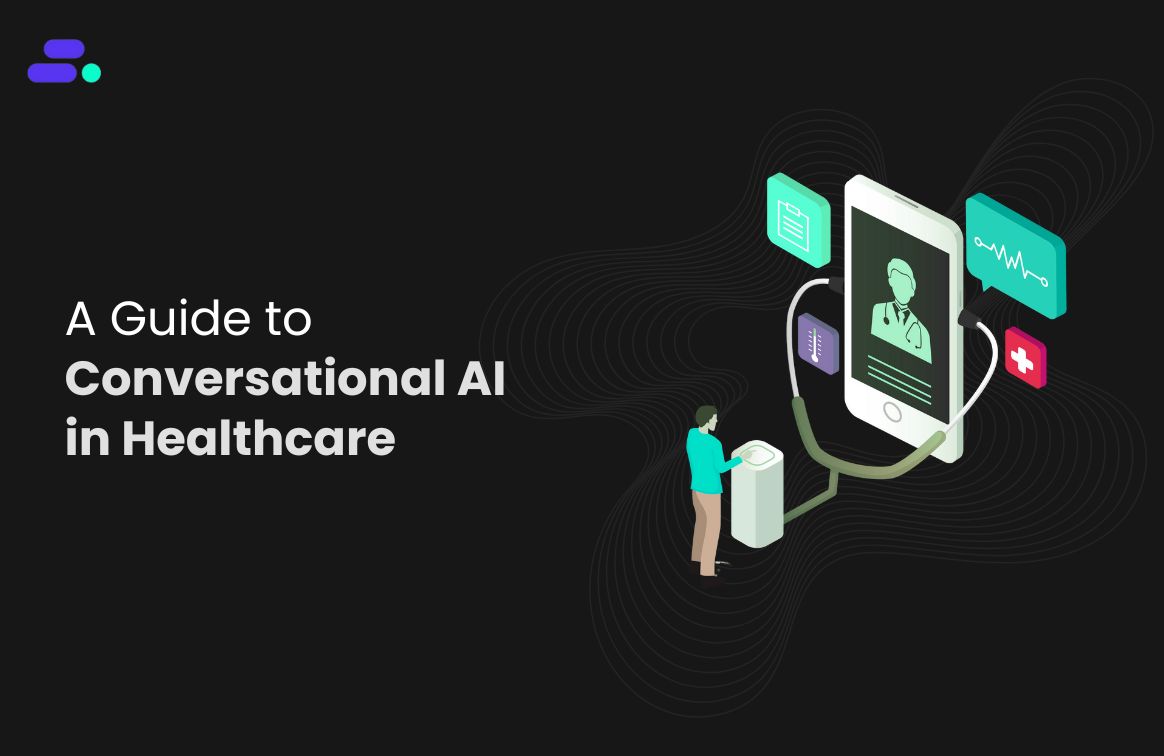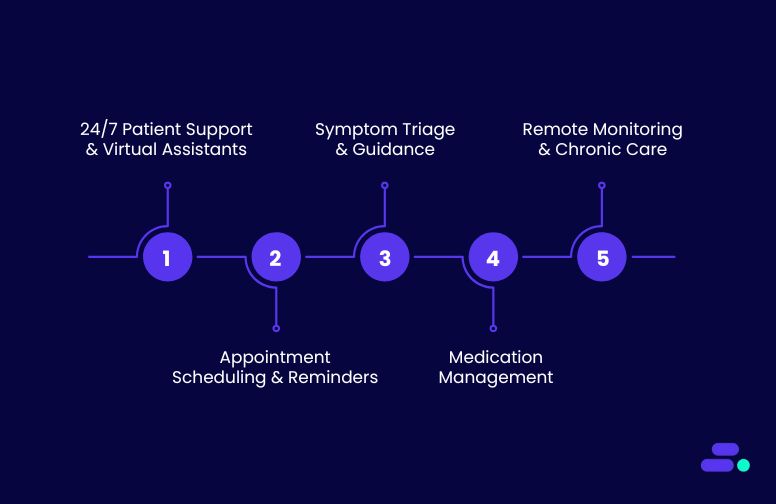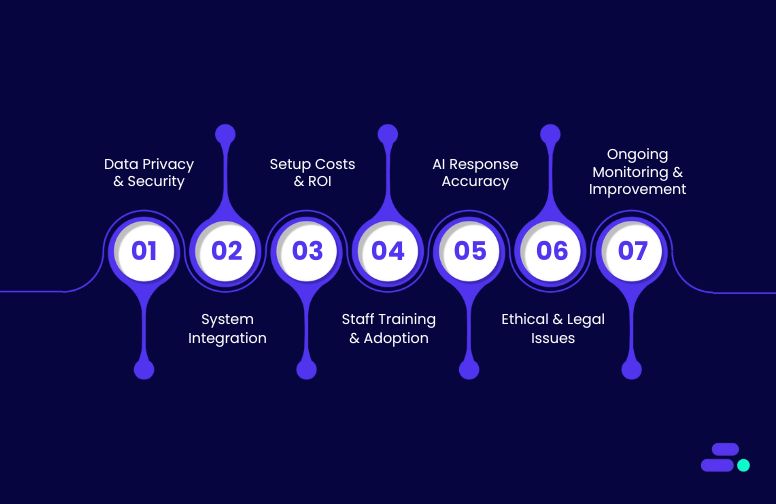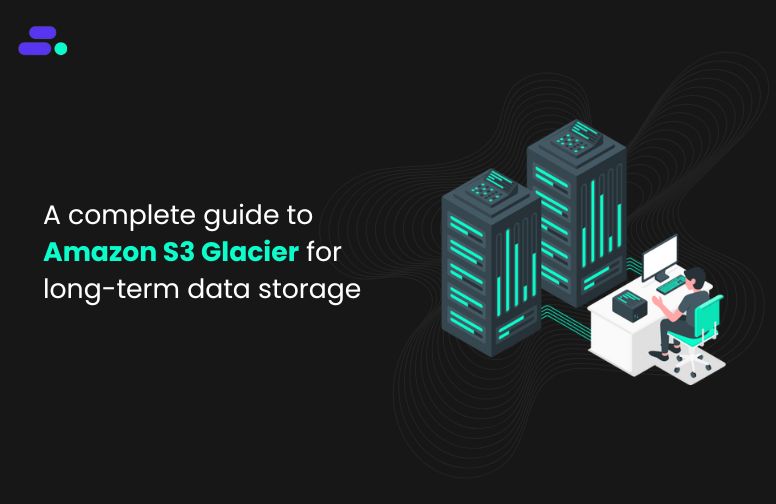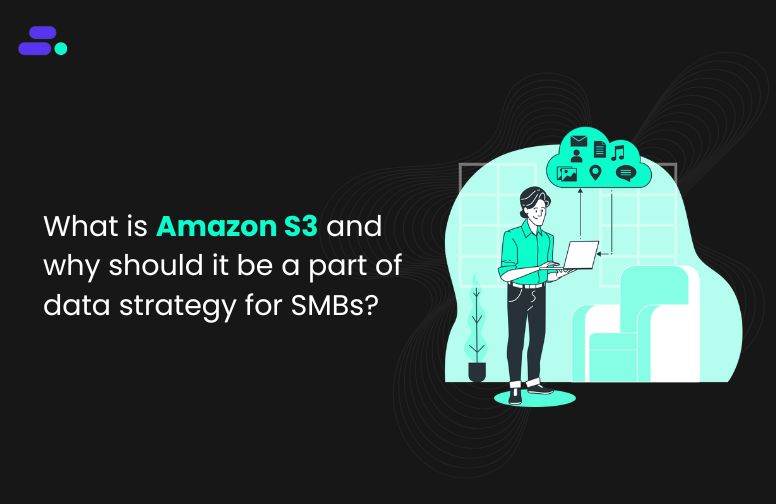This is a div block with a Webflow interaction that will be triggered when the heading is in the view.

Modernize your cloud. Maximize business impact.
Businesses today face constant pressure to keep their data secure, accessible, and responsive, while also managing tight budgets and limited technical resources.
Traditional database management often requires significant time and expertise, pulling teams away from strategic projects and innovation.
Reflecting this demand for more streamlined solutions, the Amazon Relational Database Service (RDS) service market was valued at USD 1.8 billion in 2023 and is projected to grow at a compound annual growth rate (CAGR) of 9.2%, reaching USD 4.4 billion by 2033.
With Amazon RDS, businesses can shift focus from database maintenance to delivering faster, data-driven outcomes without compromising on security or performance. In this guide, we’ll break down how Amazon RDS simplifies database management, enhances performance, and supports business agility, especially for growing teams.
Key takeaways:
- Automated management and reduced manual work: Amazon RDS automates setup, patching, backups, scaling, and failover for managed relational databases, freeing teams from manual administration.
- Comprehensive feature set for reliability and scale: Key features include automated backups, multi-AZ high availability, read replica scaling, storage autoscaling, encryption, and integrated monitoring.
- Layered architecture for resilience: RDS architecture employs a layered approach, comprising compute (EC2), storage (EBS), and networking (VPC), with built-in automation for recovery, backups, and scaling.
- Operational responsibilities shift: Compared to Amazon EC2 and on-premises, RDS shifts most operational tasks (infrastructure, patching, backups, high availability) to AWS, while Amazon EC2 and on-premises require the customer to handle these responsibilities directly.
What is Amazon RDS?
Amazon RDS is a managed AWS service for relational databases including MySQL, PostgreSQL, MariaDB, Oracle, and SQL Server. It automates setup, patching, backups, and scaling, allowing users to deploy and manage databases quickly with minimal effort.
Amazon RDS offers built-in security, automated backups, and high availability through multi-AZ deployments. It integrates with other AWS services and uses a pay-as-you-go pricing model, making it a practical choice for scalable, secure, and easy-to-manage databases.
How does Amazon RDS work?

Amazon RDS provides a structured approach that addresses both operational needs and administrative overhead. This service automates routine database tasks, providing teams with a reliable foundation for storing and accessing critical business data.
- Database instance creation: Amazon RDS instances generally run a single database engine and provide one or more databases (schemas) inside them, depending on the engine. However, for some engines (e.g., Oracle, SQL Server), multiple databases can be hosted per instance, while others (e.g., MySQL) allow an instance to host multiple schemas (databases).
- Managed infrastructure: Amazon RDS operates on Amazon EC2 instances with Amazon EBS volumes for database and log storage. The service automatically provisions, configures, and maintains the underlying infrastructure, eliminating the need for manual server management.
- Engine selection process: During setup, users select from multiple supported database engines. Amazon RDS configures many parameters with sensible defaults, but users can also customize parameters through parameter groups. The service then creates preconfigured database instances that applications can connect to within minutes.
- Automated management operations: Amazon RDS continuously performs background operations, including software patching, backup management, failure detection, and repair without user intervention. The service handles database administrative tasks, such as provisioning, scheduling maintenance jobs, and keeping database software up to date with the latest patches.
- SQL query processing: Applications interact with Amazon RDS databases using standard SQL queries and existing database tools. Amazon RDS processes these queries through the selected database engine while managing the underlying storage, compute resources, and networking components transparently.
- Multi-AZ synchronization: In Multi-AZ deployments, Amazon RDS synchronously replicates data from the primary instance to standby instances in different Availability Zones. This synchronous replication ensures data consistency and enables automatic failover in the event of an outage. Failover in Multi-AZ deployments is automatic and usually completes within a few minutes.
- Connection management: Amazon RDS assigns unique DNS endpoints to each database instance using the format ‘instancename.identifier.region.rds.amazonaws.com’. Applications connect to these endpoints using standard database connection protocols and drivers.
How can Amazon RDS help businesses?
Amazon RDS stands out by offering a suite of capabilities that address both the practical and strategic needs of database management. These features enable organizations to maintain focus on their core objectives while the service handles the underlying complexity.
- Automated backup system: Amazon RDS performs daily full snapshots during user-defined backup windows and continuously captures transaction logs. This enables point-in-time recovery to any second within the retention period, with backup retention configurable from 1 to 35 days.
- Multi-AZ deployment options: Amazon RDS offers two Multi-AZ configurations - single standby for failover support only, and Multi-AZ DB clusters with two readable standby instances. Multi-AZ deployments provide automatic failover in 60 seconds for single-standby and under 35 seconds for cluster deployments.
- Read replica scaling: Amazon RDS supports up to 5 read replicas per database instance for MySQL, MariaDB, PostgreSQL, Oracle, and SQL Server. Read replicas use asynchronous replication and can be promoted to standalone instances when needed, enabling horizontal read scaling.
- Storage types and autoscaling: Amazon RDS provides three storage types - General Purpose SSD (gp2/gp3), Provisioned IOPS SSD (io1/io2), and Magnetic storage. Storage autoscaling automatically increases storage capacity when usage approaches configured thresholds.
- Improved monitoring integration: Amazon RDS integrates with Amazon CloudWatch for real-time metrics collection, including CPU utilization, database connections, and IOPS performance. Performance Insights offers enhanced database performance monitoring, including wait event analysis.
- Encryption at rest and in transit: Amazon RDS uses AES-256 encryption for data at rest, automated backups, snapshots, and read replicas.
All data transmission between primary and replica instances is encrypted, including data exchanged across AWS regions. - Parameter group management: Database parameter groups provide granular control over database engine configuration settings. Users can create custom parameter groups to fine-tune database performance and behavior according to application requirements.
- Blue/green deployments: Available for Amazon Aurora MySQL, Amazon RDS MySQL, and MariaDB, this feature creates staging environments that mirror production for safer database updates with zero data loss.
- Engine version support: Amazon RDS supports multiple versions of each database engine, allowing users to select specific versions based on application compatibility requirements. Automatic minor version upgrades can be configured during maintenance windows.
- Database snapshot management: Amazon RDS allows manual snapshots to be taken at any time and also provides automated daily snapshots. Snapshots can be shared across AWS accounts and copied to different regions for disaster recovery purposes.
These features of Amazon RDS collectively create a framework that naturally translates into tangible advantages, as businesses experience greater reliability and reduced administrative overhead.
What are the advantages of using Amazon RDS?
The real value of Amazon RDS becomes evident when considering how it simplifies the complexities of database management for organizations. By shifting the burden of routine administration and maintenance, teams can direct their attention toward initiatives that drive business growth.
- Automated operations: Amazon RDS automates critical tasks like provisioning, patching, backups, recovery, and failover. This reduces manual workload and operational risk, letting teams focus on development instead of database maintenance.
- High availability and scalability: With Multi-AZ deployments, read replicas, and automatic scaling for compute and storage, RDS ensures uptime and performance, even as workloads grow or spike.
- Strong performance with real-time monitoring: SSD-backed storage with Provisioned IOPS supports high-throughput workloads, while built-in integrations with Amazon CloudWatch and Performance Insights provide detailed visibility into performance bottlenecks.
- Enterprise-grade security and compliance: Data is encrypted in transit and at rest (AES-256), with fine-grained IAM roles, VPC isolation, and support for AWS Backup vaults, helping organizations meet standards like HIPAA and FINRA.
- Cost-effective and engine-flexible: RDS offers pay-as-you-go pricing with no upfront infrastructure costs, and supports major engines like MySQL, PostgreSQL, Oracle, SQL Server, and Amazon Aurora, providing flexibility without vendor lock-in.
The advantages of Amazon RDS emerge from a design that prioritizes both performance and administrative simplicity. To see how these benefits come together in practice, it’s helpful to look at the core architecture that supports the service.
What is the Amazon RDS architecture?
A clear understanding of Amazon RDS architecture enables organizations to make informed decisions about their database deployments. This structure supports both reliability and scalability, providing a foundation that adapts to changing business requirements.
- Three-tier deployment structure: The Amazon RDS architecture consists of the database instance layer (EC2-based compute), the storage layer (EBS volumes), and the networking layer (VPC and security groups). Each component is managed automatically while providing isolation and security boundaries.
- Regional and multi-AZ infrastructure: Amazon RDS instances operate within AWS regions and can be deployed across multiple Availability Zones. Single-AZ deployments use one AZ, Multi-AZ instance deployments span two AZs, and Multi-AZ cluster deployments span three AZs for maximum availability. The failover time depends on the engine and configuration. Typically, Amazon Aurora Multi-AZ clusters failover in under 35 seconds; for standard RDS Multi-AZ, failover is usually completed within 60 seconds.
- Storage architecture design: Database and log files are stored on Amazon EBS volumes that are automatically striped across multiple EBS volumes for improved IOPS performance. Amazon RDS supports up to 64TB storage for MySQL, PostgreSQL, MariaDB, and Oracle, and 16TB for SQL Server.
- Engine-specific implementations: Each database engine (MySQL, PostgreSQL, MariaDB, Oracle, SQL Server) runs on dedicated Amazon RDS instances with engine-optimized configurations. Aurora utilizes a distinct cloud-native architecture with separate compute and storage layers.
- Network security boundaries: Amazon RDS instances reside within Amazon VPC with configurable security groups acting as virtual firewalls. Database subnet groups define which subnets in a VPC can host database instances, providing network-level isolation.
- Automated monitoring and recovery: Amazon RDS automation software runs outside database instances and communicates with on-instance agents. This system handles metrics collection, failure detection, automatic instance recovery, and host replacement when necessary.
- Backup and snapshot architecture: Automated backups store full daily snapshots and transaction logs in Amazon S3. Point-in-time recovery reconstructs databases by applying transaction logs to the most appropriate daily backup snapshot.
- Read Replica architecture: Read replicas are created from snapshots of source instances and maintained through asynchronous replication. Each replica operates as an independent database instance that accepts read-only connections while staying synchronized with the primary.
- Amazon RDS custom architecture: Amazon RDS Custom provides elevated access to the underlying EC2 instance and operating system while maintaining automated management features. This deployment option bridges fully managed Amazon RDS and self-managed database installations.
- Outposts integration: Amazon RDS on AWS Outposts extends the Amazon RDS architecture to on-premises environments using the same AWS hardware and software stack. This enables low-latency database operations for applications that must remain on-premises while maintaining cloud management capabilities.
Amazon RDS solutions at Cloudtech
Cloudtech is a specialized AWS consulting partner focused on helping businesses accelerate their cloud adoption with secure, scalable, and cost-effective solutions. With deep AWS expertise and a practical approach, Cloudtech supports businesses in modernizing their cloud infrastructure while maintaining operational resilience and compliance.
- Data Processing: Streamline and modernize your data pipelines for optimal performance and throughput.
- Data Lake: Integrate Amazon RDS with Amazon S3-based data lakes for smart storage, cost optimization, and resiliency.
- Data Compliance: Architect Amazon RDS environments to meet standards like HIPAA and FINRA, with built-in security and auditing.
- Analytics & Visualization: Connect Amazon RDS to analytics tools for actionable insights and better decision-making.
- Data Warehouse: Build scalable, reliable strategies for concurrent users and advanced analytics.
Conclusion
Amazon Relational Database Service in AWS provides businesses with a practical way to simplify database management, enhance data protection, and support growth without the burden of ongoing manual maintenance.
By automating tasks such as patching, backups, and failover, Amazon RDS allows businesses to focus on projects that drive business value. The service’s layered architecture, built-in monitoring, and flexible scaling options give organizations the tools to adapt to changing requirements while maintaining high availability and security.
For small and medium businesses looking to modernize their data infrastructure, Cloudtech provides specialized consulting and migration services for Amazon RDS.
Cloudtech’s AWS-certified experts help organizations assess, plan, and implement managed database solutions that support compliance, performance, and future expansion.
Connect with Cloudtech today to discover how we can help companies optimize their database operations. Get in touch with us!
FAQs
- Can Amazon RDS be used for custom database or OS configurations?
Amazon RDS Custom is a special version of Amazon RDS for Oracle and SQL Server that allows privileged access and supports customizations to both the database and underlying OS, which is not possible with standard Amazon RDS instances.
- How does Amazon RDS handle licensing for commercial database engines?
For engines like Oracle and SQL Server, Amazon RDS offers flexible licensing options: Bring Your Own License (BYOL), License Included (LI), or licensing through the AWS Marketplace, giving organizations cost and compliance flexibility.
- Are there any restrictions on the number of Amazon RDS instances per account?
AWS limits each account to 40 Amazon RDS instances, with even tighter restrictions for Oracle and SQL Server (typically up to 10 instances per account).
- Does Amazon RDS support hybrid or on-premises deployments?
Yes, Amazon RDS on AWS Outposts enables organizations to deploy managed databases in their own data centers, providing a consistent AWS experience for hybrid cloud environments.
- How does Amazon RDS manage database credentials and secrets?
Amazon RDS integrates with AWS Secrets Manager, allowing automated rotation and management of database credentials, which helps eliminate hardcoded credentials in application code.

Get started on your cloud modernization journey today!
Let Cloudtech build a modern AWS infrastructure that’s right for your business.
